Moon, star and planets -> reflection
Reflection
Reflection is the process by which light, sound, or heat is returned from a surface without being absorbed. When light, sound, or heat strikes a surface, it can be reflected, absorbed, or transmitted. Reflection occurs when the surface is smooth and the light, sound, or heat is not able to pass through the surface.
Types of Reflection
There are two main types of reflection: regular reflection and diffuse reflection.
- Regular Reflection: Occurs when light, sound, or heat is reflected from a smooth and shiny surface, such as a mirror.
- Diffuse Reflection: Occurs when light, sound, or heat is reflected from a rough or uneven surface, such as a piece of paper or a wall.
Study Guide
Here are some key points to remember about reflection:
- Reflection is the process by which light, sound, or heat is returned from a surface without being absorbed.
- Regular reflection occurs from a smooth and shiny surface, while diffuse reflection occurs from a rough or uneven surface.
- Reflection is an important concept in understanding how we see objects and how we hear sounds.
- Understanding reflection can help us design and create reflective surfaces, such as mirrors, for various purposes.
Remember, understanding reflection is important in the study of light, sound, and heat, and it has many practical applications in our everyday lives.
.◂Science Worksheets and Study Guides Second Grade. Moon, star and planets
Study Guide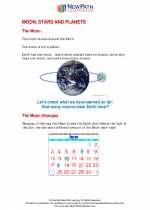 Moon, star and planets
Moon, star and planets  Activity Lesson
Activity Lesson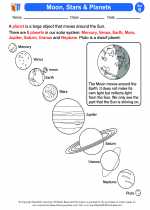 Moon, Stars & Planets
Moon, Stars & Planets  Worksheet/Answer key
Worksheet/Answer key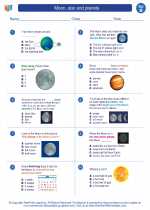 Moon, star and planets
Moon, star and planets  Worksheet/Answer key
Worksheet/Answer key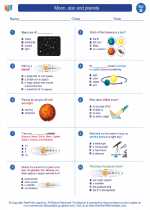 Moon, star and planets
Moon, star and planets  Worksheet/Answer key
Worksheet/Answer key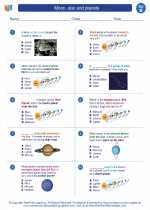 Moon, star and planets
Moon, star and planets  Vocabulary/Answer key
Vocabulary/Answer key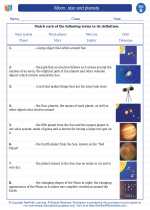 Moon, star and planets
Moon, star and planets  Vocabulary/Answer key
Vocabulary/Answer key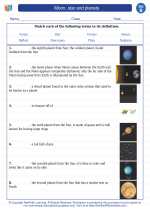 Moon, star and planets
Moon, star and planets 

 Activity Lesson
Activity Lesson
 Worksheet/Answer key
Worksheet/Answer key
 Worksheet/Answer key
Worksheet/Answer key
 Worksheet/Answer key
Worksheet/Answer key
 Vocabulary/Answer key
Vocabulary/Answer key
 Vocabulary/Answer key
Vocabulary/Answer key

The resources above cover the following skills:
Second Grade: Focus on Systems and System Models; Energy and Matter
Earth and Space Sciences: Students develop an understanding of the distribution and role of water and wind in weather, shaping the land, and where organisms live. Wind and water can also change environments, and students learn humans and other organisms can change environments too. Students develop an understanding of changing patterns in the sky including the position of Sun, Moon, and stars, and the apparent shape of the Moon.
Earth and Space Standards
Observe and explain the Sun’s position at different times during a twenty-four-hour period and changes in the apparent shape of the Moon from one night to another.